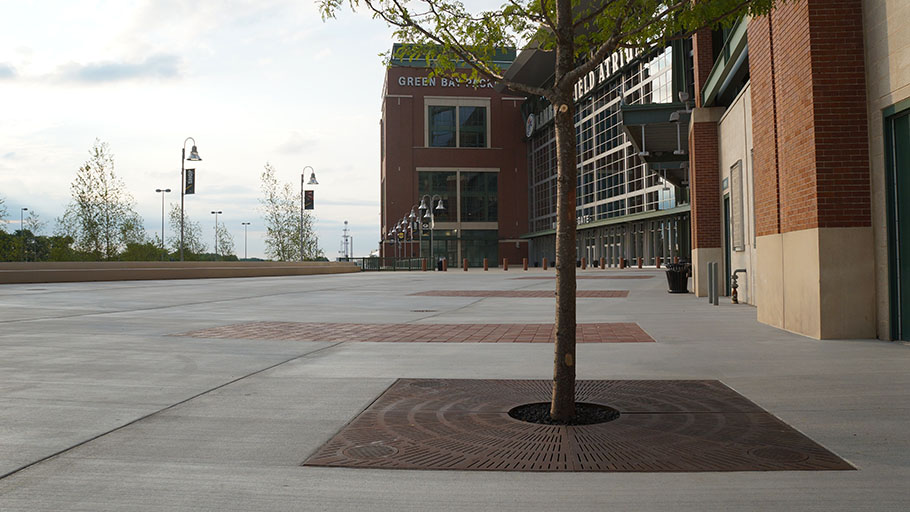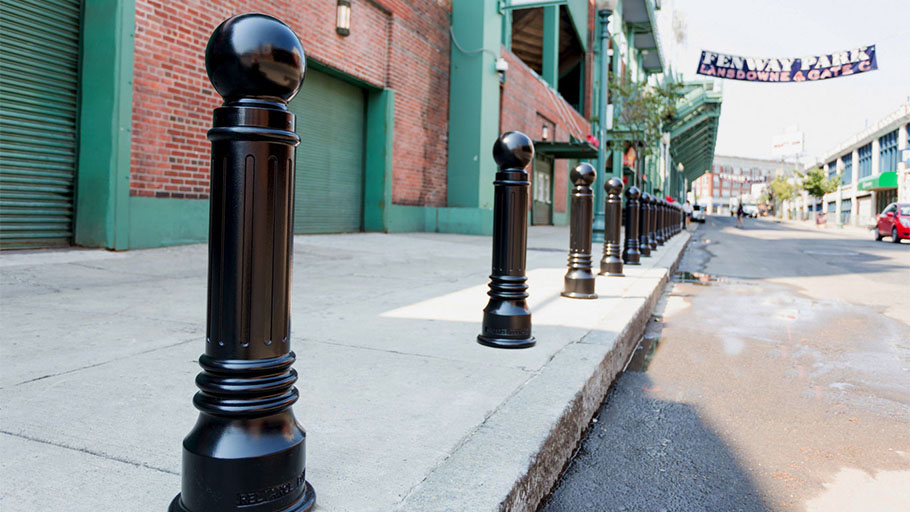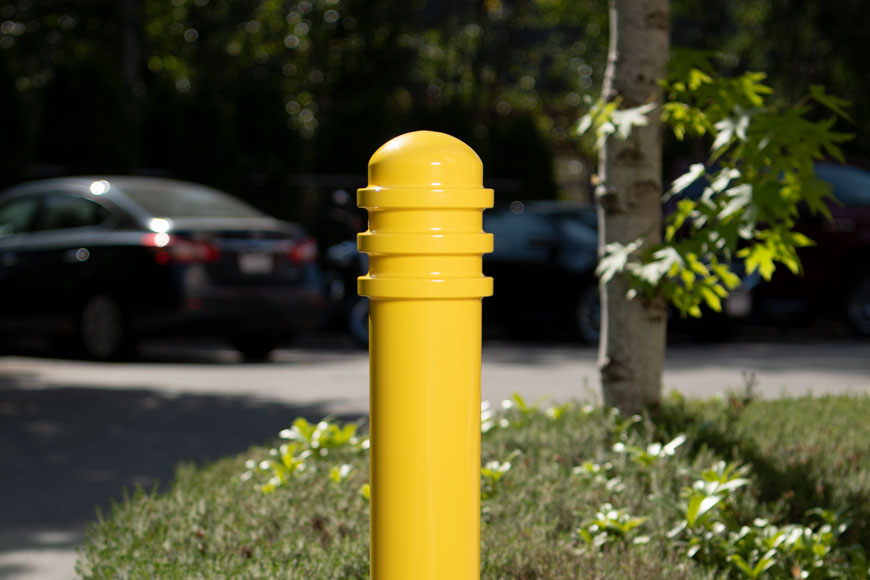Water management at the surface

Cities and counties are managing more water than ever, as hardscape covers more surface area and flash flooding becomes more common. Modern bioswale practices are changing how water management is done for the better. Softscape systems can increase rates of groundwater replenishment and offer a host of other benefits—but sewers are still a necessity in the concrete jungle. Sewer systems are a collection of built waterways that function like a river system, taking water from small capillaries and moving them into bigger channels. These eventually drain into rivers, lakes, or oceans. At each water inlet, there is an opening in the hardscape to allow water in without causing a hazard. Storm drain grates are responsible for creating safety to the street users above. When choosing the right grate, there are several issues to consider.
Considerations when purchasing storm drain grates
Hydraulic efficiency
A storm grate’s first job is to move surface water into the sewer system. The size and shape of the grating is what determines their hydraulic efficiency. Varying situations change the rate of flow of a grate: a drainage grate at the bottom of a pool processes water differently than one on the side of the road. The open area of a grate, design of the holes, acceleration of water due to gravity, depth of water, and perimeter length of the grate all determine how much surface water a sewer grate can remove.
Debris removal or passthrough
Grates should strain out the sort of debris that can clog a sewer system like the fall of large leaves in the autumn. At the same time, small particles should generally pass through, so they do not clog the grate itself.
Strength and resilience
Most storm drain grates are made from cast iron, for both strength and resilience. Strength is necessary in any place the grates will be driven over by cars and trucks: there are even extra heavy-duty grates appropriate for airports and shipping docks. Resilience is the grate’s ability to withstand weathering over time with minimal maintenance. Cast iron is often chosen because it develops a patina that prevents destructive corrosion from setting in.
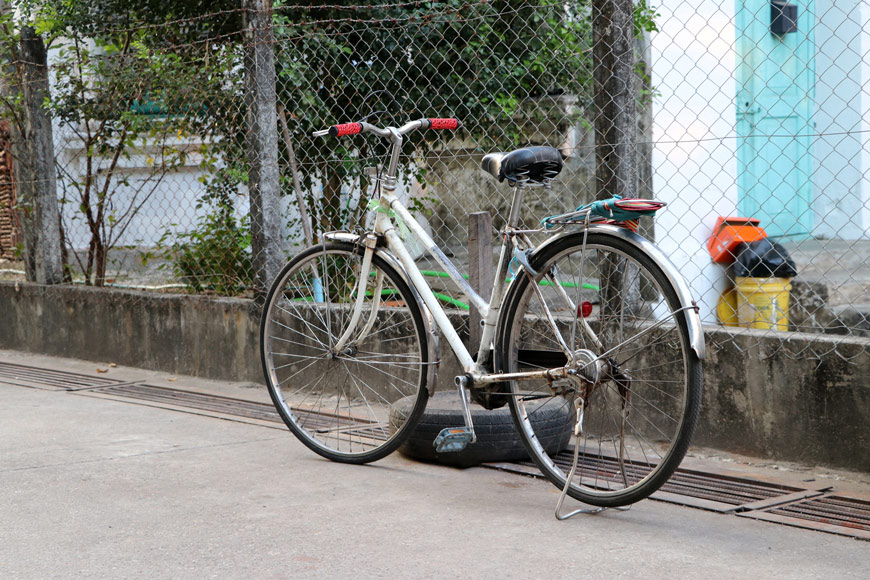
Bicycle safe grates
There are many bikes on the road, and more people adopting bikes as a commuting method every year. Early storm water grate designs were often dangerous to cyclists. With widely-spaced grate openings that ran parallel to wheels, they worked as wheel traps, grabbing the wheel and tipping the bike. Installing grates with perpendicular bars placed every 6” do not form this same hazard. Since cast iron storm drain grates have a very long lifespan, there are many bike-unsafe grates left on North American roads. Cyclists should keep their eyes out and report to their municipalities if they see unsafe grates. Gutters should also not be sloped so steeply from the road to the side as to cause bikes to slide sideways.
ADA compliance
If grates are in accessible pedestrian spaces, they must also be ADA compliant, so they don’t catch walkers, canes, or wheelchairs, and don’t constitute a trip hazard. The Americans with Disabilities Act specifies things like grade of surface and recommends grate apertures between 1/4 -1/2 inches depending on location.
There are a variety of grates available for the types of storm water drains commonly used.
Trench drain grates
Trench drain is long, narrow, linear drain that works as small collection capillaries in a sewer system. Trench can often be spotted in pedestrian spaces, stretching across sidewalks and driveways, through plazas, and edging green spaces.
Trench grates are all generally ADA compliant and bicycle friendly. Because of their prominence in pedestrian and residential spaces, decorative and architectural trench drain is more common. Unlike large street inlet grates, trench is not designed to move a lot of fast-moving water. It is more effective at preventing puddles than floods to keep walking surfaces less slippery.

Heel-proof trench grate (low water flow)
Heel-proof grates like the R-4990 or R-4989 are trench storm drain grates that are friendly to high-heeled shoes. These have no holes that are no bigger than 5/16 inches (8 mm) in any direction.

Standard trench grate (medium water flow)
Standard trench grates like the Type A series have a greater hydraulic capacity than heel-proof grates. They are a better choice for places where silt or clay might clog a small slot.

Decorative trench grate (variable water flow)
Decorative trench grates help make this practical piece of hardscape become an accent. Take a look at trench based on Greek keys, tidal waves, tree leaves, and geometric designs.
Sewer grates (inlet frame)
Sewer grates are the most recognized storm water management grates urban landscape, positioned in gutters between curb and roadway. They come in many different shapes and sizes. The different lattices available offer different hydraulic capacity and debris straining while removing water from the street. Cities sometimes customize their grates with the city name or with wastewater caution panels such as “protect our rivers” or the image of a fish.
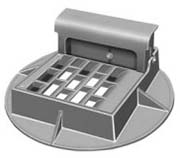
Vane style (maximum water flow; directional)
Hydraulic capacity of storm drain grates, or the ability to intercept the storm water from the gutter, is an important part of effective grate design. Vane style grates maximize water absorption in the direction of flow, even when there is a lot of water moving quickly. These are becoming increasingly popular as storm surges increase, with several styles available on the market.

Diagonal alignment (average water flow)
In tests of drain clearing capacity given different slopes and water volumes, diagonal drains are the middle of the pack. Vane and sinusoidal grates clear 0.1-0.5 cubic feet per second (cfs) more in most conditions; horizontal and vertical drains clear 0.1-0.15 cfs less.

Horizontal alignment or cross-drain (lower water flow)
Horizontal alignment or cross-drain systems are slightly more efficient than standard vertical systems but may be more troublesome for bicycles.

Vertical alignment or standard (lower water flow)
For many cities with low flood risk, vertically aligned storm drain grates are the standard system. They are often easier for bicycles to ride over.

Heel-proof grate styles (lowest flow)
Heel proof grates are built so that even high heels will not get caught in them. They are also friendly to those with canes or walkers. Unfortunately, the small aperture of the grate slots makes them less efficient, and so they are usually only installed in pedestrian spaces.
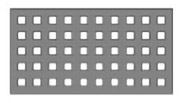
Decorative and modern styles (variable water flow)
Some spaces create their own grate style to manage their specific water flow patterns and provide aesthetic complement.
Sewer drain grate images courtesy of Neenah Foundry
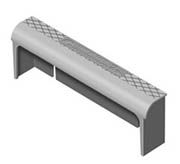
Curb boxes
Curb boxes are either grated or open cast iron frames embedded into the concrete of a sidewalk curb. They are usually used in conjunction with a standard inlet frame, creating a sewer drain grate combination that is highly efficient at capturing water. In some spaces, the flow of water along a formed gutter does not bring much debris directly into a curb box, and so grating is unnecessary.
Sewer drain grate images courtesy of Neenah Foundry
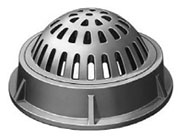
Beehive storm drain grate style
Beehive grates are domed grates often used in softscape areas where there is the possibility of a lot of organic plant debris. The soft rise of the grate helps prevent clogging. Sloped sides that slide clogs back to the surface, especially in wet conditions. Moment to moment, debris is only likely to catch on the side of the grate facing the water flow.
Although beehives are most often seen in ditches and medians to manage organic debris, they can also be used where there may be a lot of blown garbage.
Sewer drain grate images courtesy of Neenah Foundry
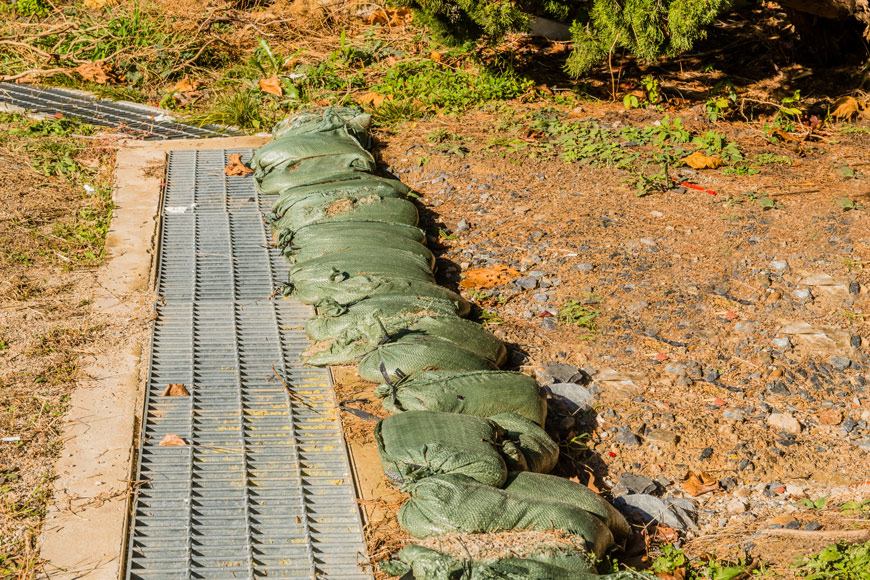
Ditch checks
Ditch checks are built to protect against erosion by slowing lateral water flow in ditches or culverts. They are a little different than standard storm drain grates, as they have the specific task of protecting other stormwater infrastructure rather than preventing standing water from amassing.
Ditches are designed to manage run-off and are common beside roads and highways. However, the ditch generally is not designed to be a river of flowing water. Instead, its job is to absorb storm water into sewers or refresh the water table. Ditch checks have water-permeable walls that do not permanently dam moving water, but rather prevent it from moving quickly enough to cut channels and erode topsoil. The concept is simple, and so can be built in a variety of ways, from commercially-available systems made of mesh to simple barriers constructed of material like hay or stone. Low-volume systems may just be a bed of gravel placed by a drainage outlet. Some ditch checks are part of a more elaborate drainage system, with trench or sewer inlets either inside or near the moderating barrier. In these cases, they will have grates. Grates in ditch checks will often need to deal with debris, and it is important that they be large enough not to clog with clay or soil, while being small enough to strain out the materials of the ditch check itself, in the case of hay or stone, or any organic matter in the area.
Finding and maintaining the right storm drain grate
One of the nicest aspects of cast iron is its longevity. Because a well-constructed sewer inlet can last for decades, with maintenance mostly focused on debris removal, it is very easy for municipalities to install and forget. For this reason, it is important to keep local grates in mind whenever a place undergoes development. Increased cyclist access on roads means that grates should be bicycle safe almost everywhere. Changing usage patterns may require an update of the strength or pedestrian friendliness of a particular street. Citizens can help report unsafe grates to their municipalities. Cities and site managers can also remind their crews to keep an eye out for unsafe conditions.
Related Articles:









